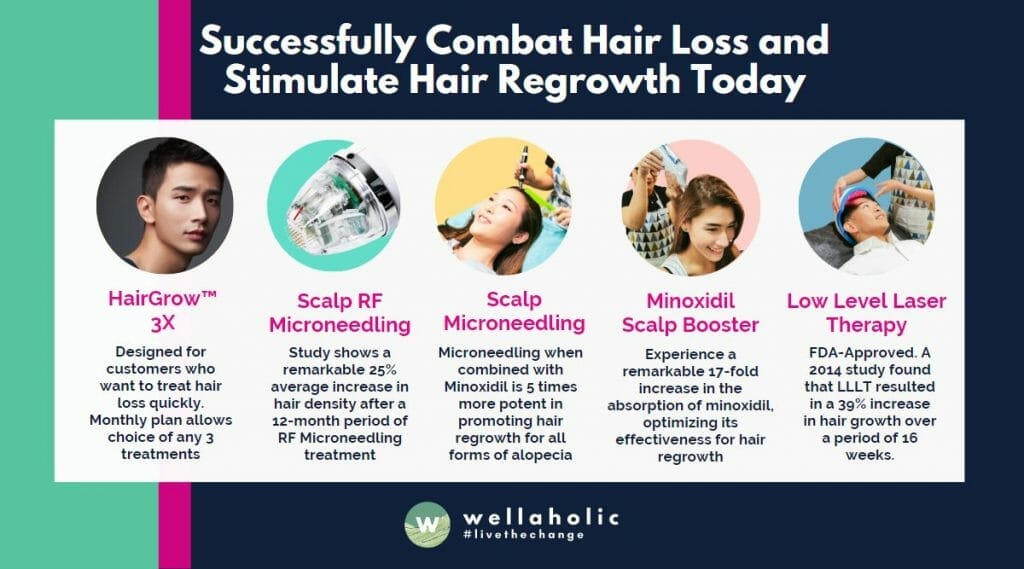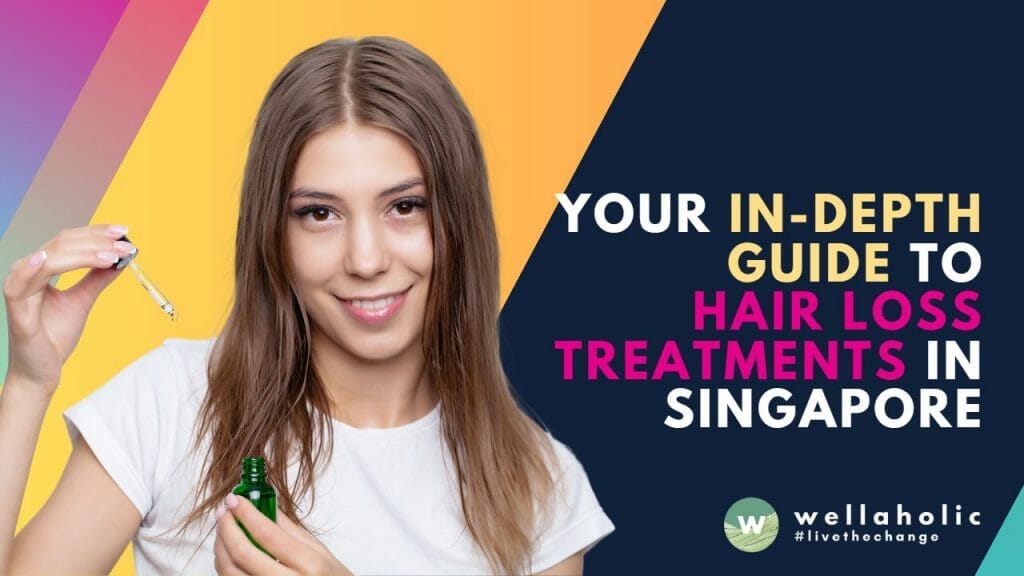
Your In-depth Guide to Hair Loss Treatments in Singapore by Wellaholic
TL:DR Summary
- Understanding Hair Loss: Hair shedding is normal, but excessive loss can indicate issues like hormonal imbalances or androgenic alopecia.
- Diet and Hair Health: Avoid allergens and balance alkaline and acidic foods to nourish hair and prevent loss.
- Hair Loss Myths: Coloring hair can weaken it, leading to breakage, but not permanent loss; frequent combing doesn’t cause hair loss.
- Dandruff and Hair Loss: Dandruff doesn’t directly cause hair loss, but related scalp inflammation and scratching can damage hair follicles.
- Choosing Hair Loss Treatments: Tailored solutions like medications, microneedling, or laser therapy depend on the cause and type of hair loss.
- Preventing Hair Loss: A balanced diet, gentle hair care, and stress reduction can help manage and prevent hair loss.
Introduction
Are you looking for an in-depth guide to the latest hair loss treatments available in Singapore? Wellaholic is here to provide you with the ultimate guide to effectively combatting hair loss. We will provide an overview of the various causes of hair loss, and discuss the available treatment options to help you make an informed decision. From medical treatments to lifestyle changes, we’ll cover it all so that individuals living in Singapore can find what works best for them. As this is an in-depth guide and pillar content compilation, it will cover many different aspects of hair loss solutions and hair loss treatments in Singapore, including relevant sub-topics of interest.
“An ounce of prevention is worth a pound of cure – take steps now to protect your hair health and avoid the need for treatments later.”
Your Top 10 Questions About Hair Loss Answered
Are you suffering from hair loss or thinning hair? Do you start finding more hair on your pillow or in your hairbrush? Do you find more hair in the shower drain after your bath? Hair loss questions are likely some of the biggest health and beauty concerns that most people face today. While losing hair is part of our daily lives, beginning at age 35 with a 40% loss rate of men and growing to a 70% loss rate for men age 80, the majority of the worldwide population will suffer from a hair loss problem. By age 60, women hair loss sufferers will be in the 80% range. In this article by Wellaholic, we will answer your top 10 questions asked about hair loss and hair regrowth.

Question 1: Am I losing more hair than I should be?
Understanding Hair Loss: Don’t Panic Over Shedding Hair
Don’t be alarmed if you notice an increase in hair shedding while showering. Hair restoration experts reveal that women typically lose between 50 and 100 strands per day, and sometimes even up to 150 strands. Men tend to experience even greater hair loss. As we age, our hair tends to become thinner and grayer. Consequently, fragile hair strands are more prone to breakage. Several factors contribute to this, including protein, vitamin, mineral deficiencies, and hormonal imbalances, which can lead to shrinking hair follicles and impede new hair growth.
The Hormonal Influence: DHT and Hair Loss
Hormones play a significant role in hair loss for both women and men. In both sexes, a specific hormone known as dihydrotestosterone (DHT) is primarily responsible for hair loss. DHT is produced as a byproduct of testosterone, a hormone that serves as a precursor for various other hormones in your body. DHT affects your hairline by causing hair follicles to shrink, leading to inhibited hair growth and eventual hair fall.
Unveiling Androgenic Alopecia: The Serious Form of Hair Loss
Androgenic alopecia, also referred to as female-pattern hair loss (FPHL), is the most common and severe type of hair loss. The miniaturization of hair follicles caused by androgenic alopecia often results in permanent hair loss. As hair follicles become progressively smaller, the hair that is lost tends not to regrow.
Question 2: How do I know if I am getting stronger Hair?
You can check on your hair’s health and strength with this method:
- Take about 50 to 60 hairs between your fingers
- Pull or tug at it, running your fingers through your hair.
- Pulling out 5 to 8 strands of hairs with this method is reasonable.
- However, if you are pulling more hairs than this, then it might show that you are losing more hair than the normal amount.
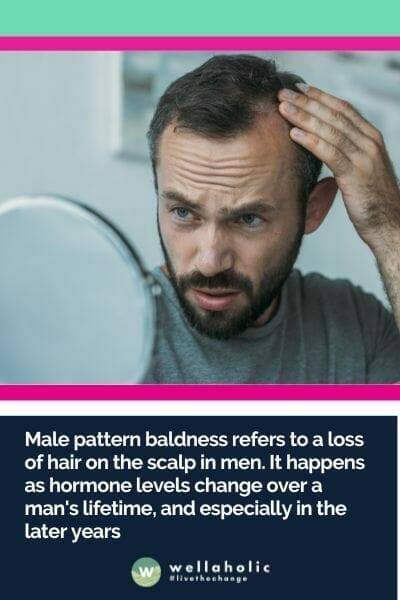
Question 3: How do I know if My Hair Loss is due to Main Pattern Baldness?
Understanding Male Pattern Baldness: Unveiling Hair Loss in Men
Male pattern baldness refers to the gradual loss of hair on the scalp in men, typically associated with hormonal changes that occur over a man’s lifetime, especially in later years. This common condition is estimated to affect 50 million men in the United States alone, with half of all men experiencing it by the age of 50.
The Slow Unveiling: Recognizing the Progression of Baldness
The process of going bald is generally gradual and can take a considerable amount of time. Identifying the initial phase of hair loss that leads to baldness can be challenging and elusive. However, it is not impossible. Look for telltale signs such as an M-shaped or horseshoe-shaped hairline, which often accompanies hair thinning and excessive shedding during showering. These indicators strongly suggest the presence of male pattern baldness.
Genetic Influence: Androgenic Alopecia and Hair Loss
Androgenic alopecia, also known as male pattern baldness or female pattern baldness, is a genetic condition characterized by hair loss. Enzymes in the body convert the hormone testosterone into dihydrotestosterone (DHT), which plays a pivotal role in this condition. DHT causes the hair follicles to shrink, leading to the aesthetic manifestation of hair loss. Notably, the Journal of Investigative Dermatology highlights that the prevalence of mid-frontal hair loss increases with age, affecting 57% of women and 73.5% of men aged 80 and over.
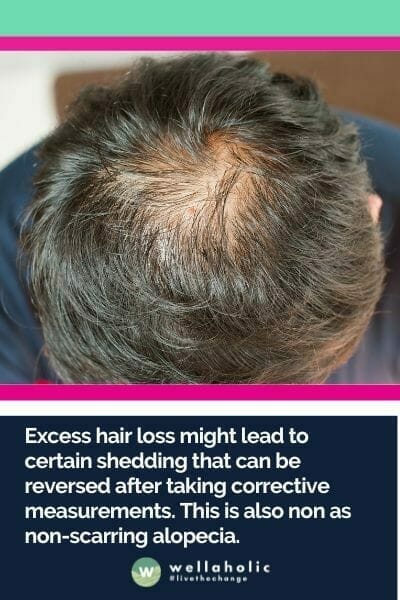
Question 4: Is Hair Loss Permanent?
Except for loss due to genetic factors, hair loss is usually temporary. In fact, if pregnancy, medication, physical stress, vitamins, minerals, or protein deficiency is the cause of your temporary hair loss, your hair might be okay after recovering your healthy medical status. The hairs should grow back very quickly. Excess hair loss might lead to certain shedding that can be reversed after taking corrective measurements. This is also non as non-scarring alopecia.
Permanent hair loss occurs when a scarring alopecia is present on the scalp. When there is scarring the hair loss is permanent because scar tissue on the skin of the scalp block the opening of the follicle. Scarring alopecia can be caused by auto immune problems, where a group of white blood cells attack other cells of the hair follicle and causes scarring. Other problems that cause scarring alopecia are wearing tight or heavy ponytails, braids and extensions, burns, blunt trauma to the head, surgery of the scalp, and scalp infections that go untreated.
Question 5: Will colouring my hair make it fall out or cause hair loss?
The straight answer is “Yes”. Both permanent and semi-permanent hair colour products contain harmful peroxide and ammonia. Ammonia swells and opens the hair cuticles, and peroxide gets inside it to change the hair colour. This lack of hair integrity makes the hair weaken and leads to breakage. Hair that is bleached or lightened takes the heaviest hit. For the most part, hair loss for those of you who routinely colour your hair with permanent hair colour is generally from breakage, not actual permanent loss. (But it is possible if you make repeated drastic bleaching attacks where you place bleach on the scalp and not just on the hair.)

Question 6: What are the foods that can cause hair loss?
The Role of Diet in Hair Health: Nourishing Your Tresses
The connection between diet and hair loss cannot be overlooked, as certain food groups may contribute to hair problems. By understanding the impact of nutrition on hair health, you can make informed dietary choices to support optimal hair growth. Let’s explore two general rules that can help promote healthier hair.
Rule #1: Avoid Allergens and Inflammation Triggers
One important rule is to steer clear of allergens and foods that cause allergic reactions. These reactions can trigger an immune response, leading to inflammation and constriction of blood flow to the scalp and hair follicles. By avoiding such allergenic foods, you can minimize the risk of immune-related hair problems and maintain a healthier scalp environment.
Rule #2: Balance Alkaline and Acidic Foods
Another rule is to increase alkaline foods and reduce acidic foods in your diet. This balance can help slow down hair loss and promote healthier hair. It is advisable to avoid dairy products, carbonated drinks, sugary cereals, and greasy foods. These types of meals can potentially cause delayed allergic reactions, create plaque on the scalp’s epidermis, contribute to hair follicle miniaturization, spike blood sugar levels, restrict blood flow, and clog sweat pores. By eliminating or reducing these items from your diet, you may be able to slow down hair loss and stimulate hair regrowth over time.
Nourish Your Hair from Within
Remember, nourishing your hair goes beyond external treatments. A well-balanced diet that includes nutrient-rich foods can play a significant role in supporting healthy hair growth. Consult with a healthcare professional or a registered dietitian to develop a personalized dietary plan that addresses your specific hair concerns and promotes overall hair health. By making conscious choices and embracing a hair-friendly diet, you can contribute to the vitality and resilience of your precious locks.
Question 7: Does frequent combing cause hair loss?
On the contrary, frequent and regular combing is a good habit, and helps to promote the health of the hair and scalp, according the hair specialists. Bear in mind that you will need need to not comb too hard as this may separate the hair from the roots. Hair fibre is extremely sensitive to excessive physical stress. Under such stress, the cuticles will flake and then strip away, leading to breakages and hair fall.

Question 8: Does Dandruff Cause Hair Loss?
Understanding Dandruff and Its Connection to Hair Loss
Dandruff, characterized by flaking skin and itching on the scalp, is a common condition that can have an impact on hair health. While dandruff itself doesn’t directly cause hair loss, it can be a contributing factor in certain cases. Let’s explore how untreated dandruff can potentially lead to hair loss.
Inflammation and Hair Follicle Damage
When dandruff is left untreated, it can result in inflammation of the scalp. This inflammation can harm the hair follicles, which are responsible for hair growth. Over time, damaged hair follicles may struggle to produce healthy hair strands, potentially leading to hair loss.
Scratching and Hair Follicle Trauma
Excessive scratching of the scalp due to the persistent itching caused by dandruff can also be problematic. The act of scratching can cause trauma to the hair follicles, leading to further damage and hair loss. It’s important to resist the urge to scratch aggressively to minimize the risk of harming your hair follicles.
Underlying Medical Conditions
In some cases, dandruff may be a symptom of an underlying medical condition such as seborrheic dermatitis or scalp psoriasis. These conditions can contribute to both dandruff and hair loss. Treating the underlying condition is crucial to address both the dandruff symptoms and potential hair loss.
Seeking Proper Treatment and Care
To effectively manage dandruff and minimize the risk of hair loss, it’s essential to take proper care of your scalp. Regularly shampooing with anti-dandruff products can help control the flaking and itching associated with dandruff. If dandruff persists or is accompanied by severe symptoms, it is advisable to consult a dermatologist who can provide a thorough evaluation and recommend appropriate treatment options.
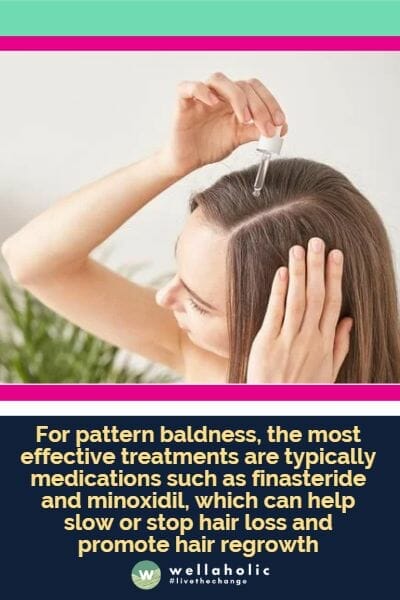
Question 9: What is the Best Treatment for Hair Loss?
Choosing the Best Treatment for Hair Loss: Tailored Solutions for Each Cause
The ideal treatment for hair loss largely depends on the underlying cause. Understanding the root cause is essential to determine the most effective approach for addressing the issue. Let’s explore some common causes of hair loss and the recommended treatments for each:
Androgenetic Alopecia (Pattern Baldness)
For pattern baldness, medications like finasteride and minoxidil are typically the go-to treatments. These medications can help slow down hair loss, stimulate hair regrowth, and improve overall hair density. Consulting with a medical professional is crucial, as they can prescribe these medications and provide guidance on their usage. Combining these medications with microneedling or scalp boosters can further enhance their effectiveness, promoting optimal results.
Autoimmune Disorders
Hair loss caused by autoimmune disorders may require treatment options that suppress the immune system. These medications aim to prevent further hair loss by reducing the autoimmune response. Consulting with a dermatologist or specialist in autoimmune disorders is recommended to determine the most appropriate treatment plan.
Nutritional Deficiencies
Nutritional deficiencies can contribute to hair loss. In such cases, addressing the deficiencies through dietary changes or supplements may be beneficial. A well-balanced diet rich in essential vitamins, minerals, and proteins can support healthy hair growth. If necessary, healthcare professionals or registered dietitians can provide guidance on specific dietary modifications or recommend suitable supplements.
Hormonal Imbalances
Hormonal imbalances can disrupt the hair growth cycle and lead to hair loss. Hormone replacement therapy may be necessary to restore hormonal balance and improve hair health. Consulting with an endocrinologist or healthcare professional specializing in hormonal disorders is crucial for an accurate diagnosis and personalized treatment plan.
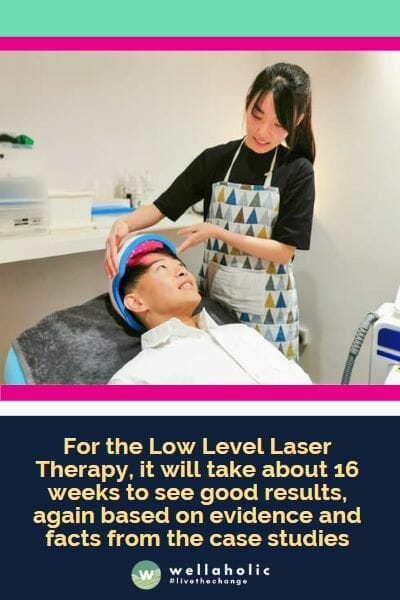
Question 10: How long does it take to see results from a hair loss solution?
Unleashing the Power of Topical Hair Loss Solutions: Timing and Treatment Types
Achieving visible results with topical hair loss solutions requires understanding the stages of hair follicles and tailoring treatments to individual circumstances. As each person’s hair loss may have different causes and factors, the timeframe for noticeable changes can vary accordingly. Generally, it takes around 5 to 7 months to observe visual differences due to the natural hair growth cycle, which spans approximately 5 months for each growth phase.
Let’s explore the treatment timelines for Wellaholic’s Microneedling for Scalp and Low-Level Laser Therapy (LLLT) based on evidence and case studies:
Microneedling for Scalp: 12 Weeks of Transformation
Wellaholic’s Microneedling for Scalp has shown promising results in case studies, with significant improvements observed after a weekly treatment regimen spanning 12 weeks. This procedure utilizes microneedles to stimulate the scalp and promote hair growth. Over the course of the treatment, the scalp undergoes positive transformations, leading to visible changes and rejuvenated hair follicles.
Low-Level Laser Therapy: Unveiling Results in 16 Weeks
Low-Level Laser Therapy (LLLT) is another effective treatment option offered by Wellaholic. Through evidence-based research and real-world case studies, it has been observed that LLLT typically requires a treatment period of approximately 16 weeks to achieve satisfactory results. LLLT utilizes the power of laser technology to stimulate hair follicles, promoting hair regrowth and revitalizing the scalp.
Personalized Approach for Optimal Results
It’s important to note that individual responses to these treatments may vary. Factors such as the severity of hair loss, underlying causes, and overall health can influence the timeframe for visible improvements. To maximize the benefits, it is recommended to consult with a hair loss specialist or Wellaholic’s experts who can assess your specific needs and provide personalized guidance.
Remember, consistency and adherence to the recommended treatment protocols are crucial for obtaining the best possible outcomes. By staying committed to your chosen treatment plan, you can embark on a transformative journey towards healthier, revitalized hair.
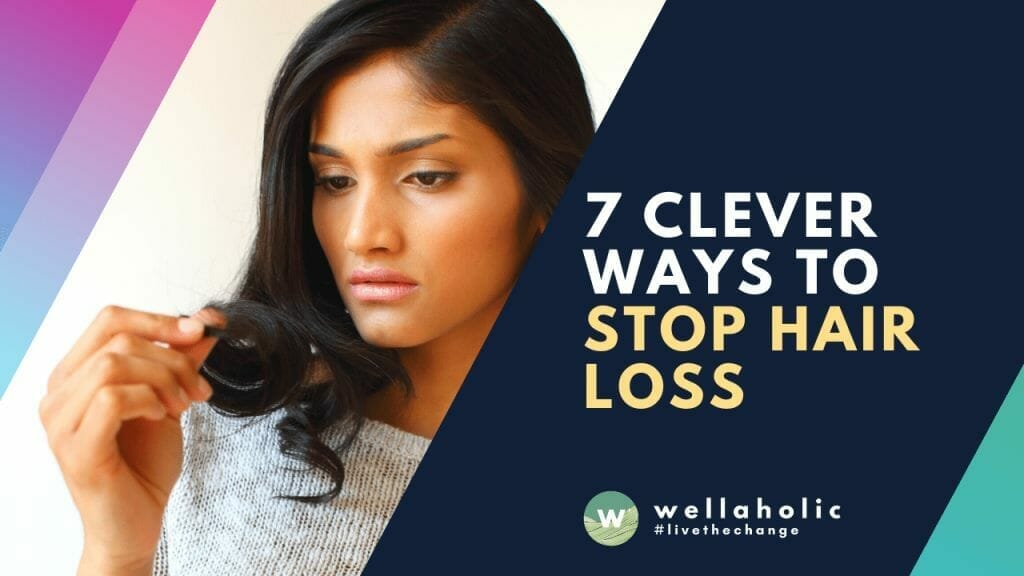
7 Clever Ways to Stop Hair Loss
Over 53% of Singapore Women Polled Report Hair Loss as Primary Hair Concern
If you have actually been splitting hairs over shedding your hair, you’re not alone. Hair loss, called alopecia, is a typical problem impacting more than 500 million individuals worldwide. According to a survey executed amongst women in Singapore in 2019, over 53% of respondents aged 35 to 44 years reported hair loss as their key hair concern. So exactly how do you know if you’re losing greater than normal? Typically, many people shed about 100 hairs of hair a day. And also with new hairs growing to happen of the ones shed, most won’t notice a difference.
But if less or no strands grow back as well as you start seeing a declining hairline or thinning locations, you could have alopecia. In this updated article, Team Wellaholic will talk about 7 clever ways to stop hair loss.
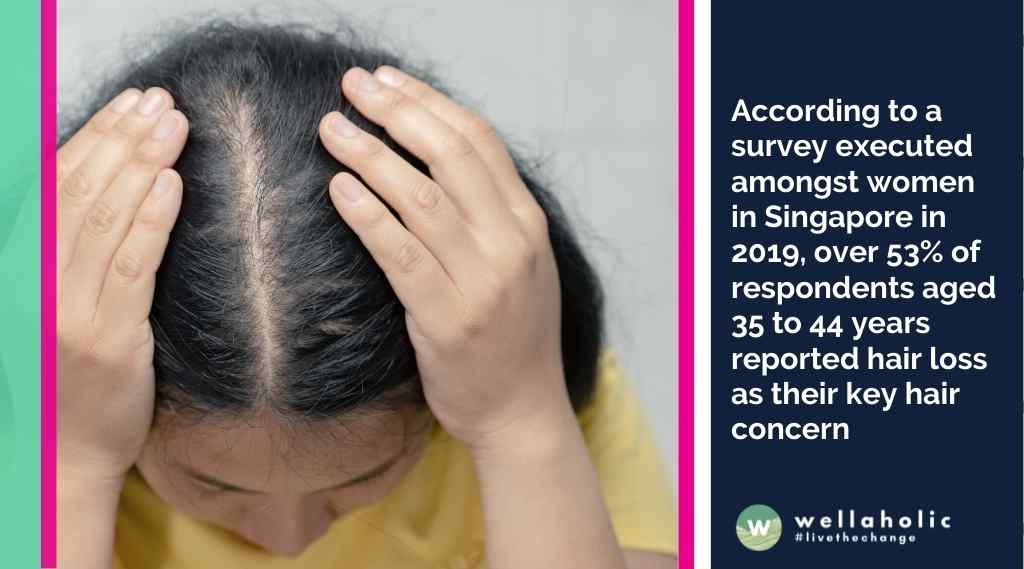
Method 1: Add Iron in Your Diet
The hair cells are the fastest expanding cells in the body but they are additionally the very first ones to be impacted you don’t eat appropriate or experience deficiencies due to the fact that they are not required for survival. All the nutrients that you consume are first sent out to the parts of the body that really need them like the heart, liver, kidneys and afterwards what’s left benefits your hair. This makes it vital for you to eat the ideal nutrients as well as in the ideal quantities.
Iron shortage is extra common in women of childbearing age than men and also postmenopausal females. In this situation, the blood does not have enough red blood cells which carry oxygen to the cells and provide you the energy that you need. When hair follicles grow, they require a lot of iron. Ladies that consistently have hefty menstrual periods go to a high risk of ending up being iron deficient. This makes iron deficiency among the most common reasons for hair loss amongst females. If you have a healthy and balanced lady losing hair it is most likely as a result of iron shortage. You need to also obtain your Vitamin D and also Vitamin B12 levels inspected, these deficiencies can additionally create hair loss.

Method 2: Add Protein in Your Diet
A solitary hair of hair is composed of protein fiber which implies that it calls for an adequate dose of healthy protein to expand. If you do not take in sufficient healthy protein, your body will certainly allocate the amount offered by removing the supply to the hair follicles. If you do not eat adequate healthy protein, your hair is most likely to become completely dry as well as brittle. Every cell needs healthy protein for life; they are required for cells repair work and also for the construction of new cells.
At a certain time, about 90% of your hair strands are in the expanding phase which can last for 2 to 3 years. As soon as this stage mores than, they become part of a relaxing stage for another 3 months and also lastly they dropped and also are changed by brand-new hairs. If you do not have enough healthy protein in your diet plan, a large number of strands may get in the resting stage at the same time and also hair loss might end up being obvious.
Your everyday healthy protein intake should preferably be 30% of the complete calorie count that one consumes. Total healthy proteins are those which contain all essential amino acids such as cheese, milk, soy, legumes, lentils, eco-friendly peas, quinoa and also yogurt. Amino acids are the building blocks of healthy protein, there are eight important amino acids that the body does not produce and must be stemmed from your diet plan.
Method 3: Consider the Mediterranean diet
A 2018 research study revealed that a diet having raw vegetables as well as fresh herbs, like the Mediterranean diet regimen, may lower the threat of androgenic alopecia (female pattern baldness or male pattern baldness) or reduce its beginning.
Finest outcomes were observed when individuals taken in high quantities of these foods– such as parsley, basil, salad greens– greater than 3 days a week. The Mediterranean diet regimen is a method of consuming that’s based on the traditional foods of Greece, Italy as well as various other nations that border the Mediterranean Sea. Plant-based foods, such as entire grains, vegetables, legumes, fruits, nuts, seeds, natural herbs as well as spices, are the structure of the diet plan.
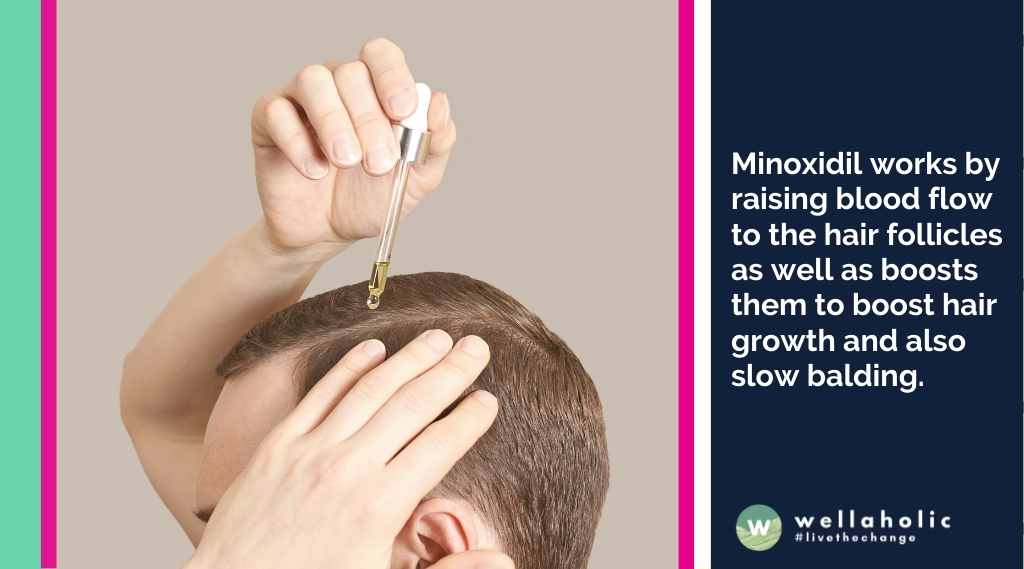
Method 4: Use over-the-counter hair loss medication
Topical solution, lotion or foam including Minoxidil are applied to the damaged location of the scalp. Minoxidil works by raising blood flow to the hair follicles as well as boosts them to boost hair growth and also slow balding.
You can acquire topical therapy of Minoxidil without a prescription at drug stores. Some reported side effects of the medication are itching, dry skin, inflammation and scaling at the site of application. Consult your pharmacist or medical professional if the signs continue or end up being frustrating.
Note: The rate of brand-new hair development varies from person to person. Hair development typically occurs after a minimum of 2 to 4 months with constant use. Topical Minoxidil is only efficient for as long as it is used. Loss of hair will take place over a period of 3 to 4 months after Minoxidil therapy is quit. Hair density will certainly revert back to the degree prior to the medication was started.
Method 5: Microneedling for Scalp
Microneedling for Scalp helps treat hair loss and promote hair regrowth. Microneedling for Scalp is a Collagen Induction Therapy hair loss treatment in Singapore which is also able to cause controlled trauma in the scalp to promote hair growth. Together with the use of Minoxidil 5%, Microneedling can lead to positive effects on hair growth over a 12-week period. Especially effective for patients with Alopecia Areata and Androgenetic Alopecia, or male pattern baldness, receding hairline and thinning hair.
HOW IS MICRONEEDLING FOR SCALP TREATMENT CONDUCTED?
- The Microneedling for Scalp procedure is comfortable and easy with no downtime.
- Prior to the treatment, please keep your hair washed and cleaned. Avoid applying wax, gel, clay, etc.
- Before your treatment, our friendly consultant will check to find areas with hair loss and make a note of it.
- The treated area is cleaned with alcohol to disinfect the area.
- The Microneedling for Scalp treatment is started. This may take between 20 to 40 minutes depending on the size of the area.
- The consultant will apply the 5% Minoxidil and gently massage the area for 5 minutes.
Method 6: Scalp Booster with Mesotherapy and Electroporation
HairGrow Scalp Booster uses two proven technologies of WellaBoost – Method One (High Pressure Jet Spray) and Method Two (Electroporation). This helps to improve the absorption of Minoxidil by the scalp by up to 17 times and is ideal for treating hair loss.
In a study conducted using various interventions for treating alopecia and hair loss, up to 54% found both mesotherapy and minoxidil intervention effective in reducing hair loss when used together. There was ample evidence to support the efficacy and safety of topical minoxidil when used with mesotherapy.
BENEFITS OF SCALP BOOSTER
- HairGrow™ Scalp Booster has been proven to increase 38% hair cell growth in 4 weeks, and 600% improvement in hair thickness when used with Minoxidil. It can help to reduce hair loss and also treat Alopecia.
- HairGrow™ Scalp Booster is non-invasive and needle-free.
- HairGrow™ Scalp Booster can see up to 17x improvement in absorption of active ingredients for hair regrowth.
- The treatment is safe, painless, with no downtime and no side effects.
Method 7: Try Low-Level Laser Light Therapy (LLLT)
The FDA has approved this newer treatment to help with hair growth. LLLT is a modern non-surgical hair loss treatment. LLLT uses laser light to stimulate cell growth and supercharge hair follicles. This laser technology helps to combat hair loss and improve the volume and appearance of hair. The LLLT helmet is FDA approved. The LLLT treatment has been proven to have no side effects and takes about 20 minutes per session.
According to a 2014 study, low-level laser therapy appeared to be safe and effective for hair growth in both men and women. A 2013 study of 41 males ages 18 to 48 found that laser hair treatment provided a 39 percent increase in hair growth over a period of 16 weeks.
Study 1: Low-Level Laser (Light) Therapy (LLLT) for Treatment of Hair Loss (2013) [source]
- In 2013, a study was conducted with 15 patients using a device stimulating LLLT (6000 to 1600nm).
- The patients’ scalps were irradiated regularly with the device.
- As a result of this study, 47% of the patients’ hair growth occured in 1.6 months earlier in irradiated areas than in non-irradiated areas.
Study 2: The growth of human scalp hair mediated by visible red light laser and LED sources in males. (2013) [Source]
- 48 males were recruited. 22 males were subjected to the LLLT helmet with 5MW lasers and 30 LEDS (655+20nm). The remaining 19 were placebo.
- Based on this study, there was a 35% increase in hair growth for the males with the LLLT helmet.
- LLLT of the scalp at 655 nm significantly improved hair counts in males with androgenetic alopecia

How to Stop and Reduce Hair Loss
Who has not had a hair loss scare? All of us, sooner or later, start to worry that we might be losing too much hair. While most of the moment, it is only a false alarm, and it is possibly just our hair’s routine shedding, in some cases, it’s more than that. However, what could be causing the sudden hair loss? In case you’ve been experiencing baldness and have reason to believe that it is not just your shedding habit, the first thing to do is to consult your doctor. In the following article adapted from Tropika Club, the Wellaholic team will discuss the phases of hair growth, causes of hair fall, and how you can reduce it obviously.
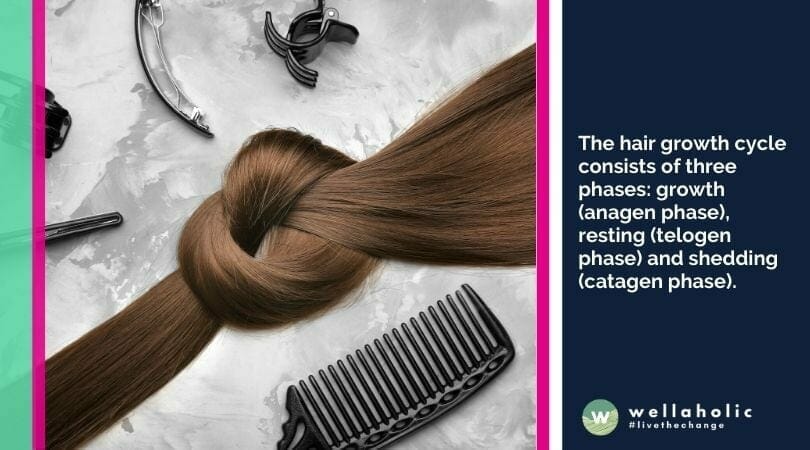
What are the stages of hair growth?
Have you ever wondered why your hair does not grow past one stage, however much you attempt? That is because, contrary to popular belief, your hair has a life cycle of 2-6 years, and it drops out. And a new hair grows in its place, just like how plants grow in nature. There is a hair growth cycle that you need to first know of.
- Anagen Stage 1 – This is the stage where the hair grows out from the follicles, and the shaft is always constructed, increasing the amount of your hair. This stage will last for 2-6 years.
- Catagen Stage 2 – Within this phase, your own hair prepares to enter resting. This stage can last for approximately 2 weeks.
- Telogen Stage 3 – The final phase is the resting stage in which the hair stops growing and eventually falls out to allow new hair replace it. This phase lasts for approximately 5-6 weeks.
- Neogen And Exogen Stage 4 – Neogen is the regeneration stage of a hair follicle, where a brand new follicle develops in place of their old one. Exogen is the releasing of the old anagen.
About 10-20% of your hair is always in the resting phase at any particular time. Baldness happens when your hair falls out without finishing this three-stage cycle. The hair loss becomes permanent when the follicle stops producing hair, resulting in balding. There are two types of hair fall that can lead to balding.
What are the types of hair loss?
Pattern 1: Telogen Effluvium
In case you have been experiencing loss of hair from all over your scalp and body, it is likely that you’ve got Telogen Effluvium. Telogen Effluvium occurs when more than 20% of your follicles abruptly go into the telogen phase, decreasing the number of follicles which are actively growing hair (3). This results in the loss of volume and, eventually, balding. Telogen Effluvium is mostly induced by certain triggers. .
- Health triggers: Malaria, typhoid, tuberculosis, thyroid issues, malnutrition, syphilis, autoimmune diseases, and nutrient deficiencies.
- Stress Triggers: Emotional trauma, heavy labour, starvation, crash diets, serious injuries, and surgeries.
- Drug Triggers: Oral retinoids, oral contraceptives, anti-thyroid drugs, anticonvulsants, beta-blockers, amphetamines, Captopril, and heavy metals.
- Local Triggers: Hair dye allergies
Pattern 2: Alopecia
Hair loss can take several forms, which range from loss in well-defined patches to diffuse or complete hair loss, which may affect all hair-bearing websites. This is called hereditary or alopecia hair loss. In androgenic alopecia, the hair starts to drop off if testosterone (the male sex hormone) is converted into dihydrotestosterone and starts to attack the hair follicles, making them worthless and curbing hair growth. Female pattern hair loss is strikingly different from male pattern baldness. The primary symptoms of female pattern baldness include the following:
Hair thinning in female pattern baldness is observed mainly on the top and the crown area. Balding starts with the widening of the centre hair part. The front hairline stays untouched in most patients. The hair loss may be intense, but it doesn’t cause complete or near total baldness, as it does in men. More hair loss observed during showers and while cleansing your hair.
The source of hair fall vary from person to person. While in some circumstances, external factors may be responsible, some serious medical conditions, lack of nourishment, and heredity are also major causes of hair loss in many patients. The top factors Which May cause premature hair loss in women are:
- Hair thinning in female pattern baldness is observed mainly on the top and the crown area.
- Balding starts with the widening of the centre hair part.
- The front hairline remains unaffected in most patients.
- The hair loss may be acute, but it does not lead to complete or near total baldness, as it does in men.
- More hair loss observed during showers and while brushing your hair.
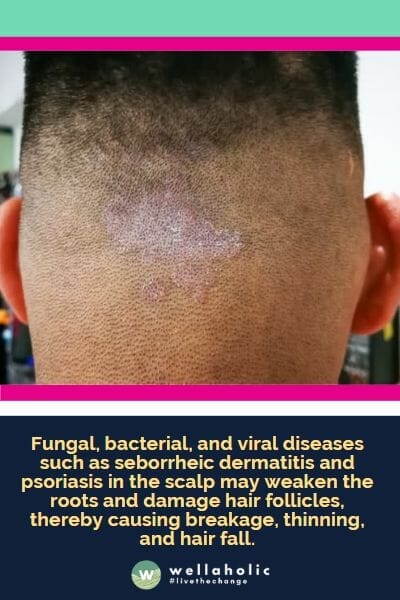
What are the main causes of hair fall?
- Physical And Emotional Stress – Persistent illness, drastic and excessive weight loss and intense physical labour can get the body to get drained and dried. This will make the hair follicles undernourished and weak and might cause rapid baldness.
- Hereditary Factors – Hereditary baldness is known as alopecia. Though this is more evident in men, girls, too, will likely create genetically inherited alopecia. There are a variety of forms of alopecia, such as hepatitis alopecia, traction alopecia, etc..
- Hormonal Changes – Hormonal changes in the body increase the sensitivity of hair follicles, weaken hair follicles, and cause extra hair fall. Menopause, ovarian cyst, hypothyroidism, hyperthyroidism, etc. cause changes within your own body’s hormonal balance, which might finally result in hair loss.
- Scalp Infection – Fungal, bacterial, and viral diseases such as seborrheic dermatitis and psoriasis in the scalp may weaken the roots and damage hair follicles, thereby causing breakage, thinning, and hair fall.
- Pregnancy – The majority of women experience frequent dehydration, fatigue, and hormonal imbalance during and post-pregnancy. This causes enhanced sensitivity within the hair follicles. Additionally, it creates unfavourable scalp ailments. Each of these factors together may result in chronic hair fall.
- Alopecia Areata – Alopecia Areata is an autoimmune disorder where the immune system errors hair to get a foreign contaminant and starts attacking the hair follicles, causing hair loss. There is no cure for this illness.
- Medication And Treatments – Certain medical conditions involve surgeries and treatments that help to cure the ailment. While these cure your situation, the unwanted effects of the treatments can often damage the hair follicles and cause rapid hair fall. Medications such as chemotherapy, steroids, and drugs for heart problems, heart diseases, depression, etc. can cause extreme baldness.
- Thyroid Disorders – Anti-thyroid medication virtually always result in hair loss. The hair appears thin, and the baldness is dispersed all over the scalp. Successful treatment often results in the hair return, but sometimes, the hair loss is permanent.
- Over Supplementation – Over supplementation of a few nutrients, such as vitamin A, vitamin E, and selenium, has been discovered to induce baldness, among other dangers (10). Most hair supplements include these nutrients, although deficiencies in vitamin A and selenium have not been linked to hair loss. Instead of taking vitamins in their concentrated form as nutritional supplements, it is better to choose them out of fruits and other organic foods.
- Heavy or Over-styling – Heavy use of hair products and hair accessories may lead to hair loss. Some hair products, like sulfate lauryl shampoos and hair sprays, are all known to contain chemicals that aren’t good for your scalp and hair. Hair accessories (like elastic bands) are proven to pull on the hair. These may cause your hair to fall out. Hairstyles that require the hair to be pulled tight like a tight braid or ponytail may also trigger hair fall.
We know that dealing with baldness can be overwhelming, but there are things you can do to curb the problem. Read our part II to find out what you can do to stop hair loss, and even regrow your lost hair.
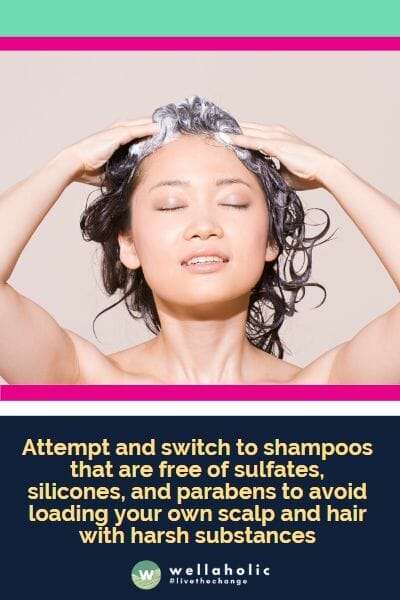
How to make changes to your hair care routine?
Making a couple of tiny changes to your daily routine can help reduce hair fall. Utilise a wooden wide-tooth comb to untangle your hair. You can use your usual brush after this. This will reduce breakage and hair loss from yanking. It is also vital to remember not to comb your hair when it is wet. Your hair is at its most vulnerable when wet, which raises the odds of breakage.
Wash your hair at least one time every three days with a gentle hair cleanser or shampoo to eliminate all of the accumulated dust, dirt, oil, and bacteria build-up. Keep it clean at all times to prevent hair drop from clogged follicles. It’s also important not to wash your hair more than thrice a week. Overwashing will strip your scalp and hair of natural oils that are essential for healthy hair growth.
Another suggestion is to use your towel in the right way. Instead of aggressively trying to use your towel to dry your hair, and subjecting them to excessive force, gently squeeze excess moisture out of your hair with your towel and let it dry naturally. Attempt and switch to shampoos that are free of sulfates, silicones, and parabens to avoid loading your own scalp and hair with harsh substances that cause damage, making your hair brittle and more prone to breakage.
Can exercising regularly prevent hair loss?
You would be surprised at how much stress can result in hair loss. And nothing relieves stress in addition to physical activity does. Regular exercise such as yoga can go a long way in reducing anxiety and may help curb hair fall. Beauty comes from the mind and a healthy mind leads to healthy living. Therefore, it is crucial to maintain a balance in your life. Exercise boosts body health and promotes a strong hair growth cycle. It also increases the blood flow to scalp and promote circulation around the scalp, resulting in better hair growth. Work these eight simple, easy to do exercises into your daily regime for hair growth and good health.

Can hair growth supplements prevent hair loss?
There are lots of hair growth supplements that can help regrow hair and suppress hair fall. Even specific vitamin supplements go a long way in enhancing the health and volume of your hair loss. However, do not begin taking any supplements without consulting a healthcare practitioner. Minoxidil is among the very best drugs for hair loss, though it might have a side effect of hypertrichosis (abnormal quantity of hair growth over the body). Cyproterone acetate is just another powerful medication for hair loss in women, though it isn’t advisable for guys.
Can hair oil treatments help with hair loss?
There have been research reports claiming that oiling your hair overnight can really make a difference. Though you might not like the concept of sticky, greasy hair, the application of oils, like coconut, peppermint, and argan oils, can help your hair in the long run. Leaving your hair straightened overnight supplies enough time for every strand to be coated and for the scalp to find nourished. Dandruff and dead cells are loosened from the movement of the fingers and can be removed easily with shampoo the next day.
Can hair spa treat hair loss?
Many salons offer hair spa remedies that are meant to strengthen, condition, and nourish your hair. These remedies are ideal for women who are busy and stressed. They not only enhance hair health but are also the perfect way to relax and destress. Listed below are the Advantages of hair spa therapy:
- It profoundly states your hair, treats split ends and repairs dry, damaged, and dull hair. Additionally, it helps remove dandruff.
- Hair spa therapy provides your scalp and hair with the essential nutrients needed for healthy hair growth.
- It helps fortify the hair follicles and revitalises the scalp, creating an ideal atmosphere for unhindered hair development.
- It prevents scalp ageing and improves blood circulation in the scalp using a stimulating massage.
- It helps remove impurities from your hair and scalp, preventing build-up and flaking, resulting in better hair health.
- The hair spa therapy provides relief from stress and tension.
- It deals with baldness or thinning hair by providing damaged cells in your scalp with extra energy to resume normal functioning. This can help stimulate hair growth and curb baldness
Will hair transplant help with hair loss?
Hair transplantation is one of the curative methods for hair. It is achieved by simply taking donor hair and placing it where baldness occurs. A hair transplant is a procedure in which a plastic or dermatological surgeon moves hair to a bald area of the head. The surgeon usually moves hair from the back or side of the head to the front or top of the head. For FUT, a doctor would remove strips of tissue from the donor area, and, once extracted, cut these strips into individual follicular units. Tiny cuts are then made in the scalp for the follicular unit grafts to be carefully placed into, which can leave some scarring. FUE is the modern approach to hair transplants and is usually favoured by patients because it leaves less obvious scarring. For FUE, individual hair follicles are extracted directly from the patient’s donor area, which is typically the back of the neck, and then moved to the hair transplant site using a specialist micro surgical needle.
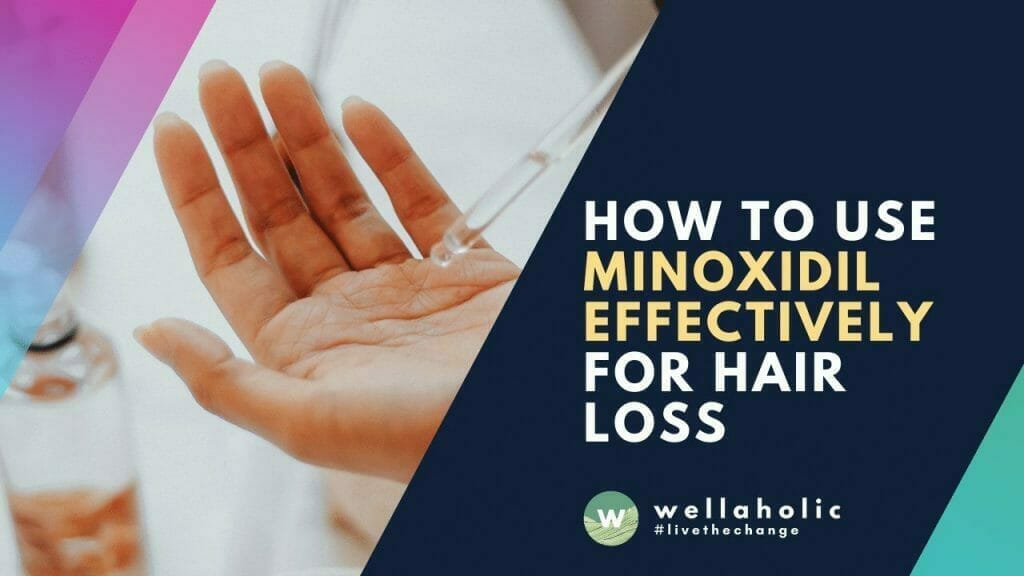
How to Use Minoxidl Effectively for Hair Loss
Minoxidil is a medication that is used to treat high blood pressure. It is also used to promote hair growth in people who are balding. Minoxidil works by widening blood vessels and increasing blood flow to the areas where it is applied. This increased blood flow helps to stimulate hair growth. Minoxidil is available in a topical solution or a foam and is applied to the scalp twice a day.
How to Use Minoxidil Effectively?
If you’re concerned about hair loss, you might be considering using minoxidil. Minoxidil is a topical solution that is applied to the scalp. It is thought to work by increasing blood flow to the hair follicles. In this article, we will provide some tips on how to use minoxidil and how to make the most of it.
To apply minoxidil topical solution:
- Make sure your hair and scalp are completely dry before applying this medicine. Do not apply over wet or damp hair.
- Apply the necessary amount to the area of the scalp that is being treated. Start from beginning in the center of the area. Follow your doctor’s instructions on how to apply the solution if needed.
- Do not shampoo your hair for 4 to 6 hours after applying minoxidil. Ideally, leave the solution overnight.
- Immediately after using this medicine, wash your hands to remove any medicine that may be on them. Maintain hand hygiene.
- Do not use a hairdryer or blower to dry the scalp after you apply minoxidil solution. Blowing with a hairdryer on the scalp may make the treatment less effective.
- Allow the minoxidil to completely dry for 42 to 6 hours after applying it, including before going to bed. Minoxidil can stain clothing, hats, or bed linen if your hair or scalp is not fully dry after using the medicine, so use a hair net just in case.
- Avoid transferring the medicine while wet to other parts of the body. This can occur if the medicine gets on your pillowcase or bed linens or if your hands are not washed after applying minoxidil.
Minoxidil Results: How Long Does it take to Work?
A lot of people ask, “how long does it take for minoxidil to work?” The answer is that it varies from person to person. Some people see results within a few weeks, while for others it may take several months.
How long does minoxidil take to work? It all depends on the individual. Some people see results in as little as a few weeks, while it may take others several months.
Are There Any Side Effects to Minoxidil?
The most common side effect of minoxidil is dizziness. Other side effects include headache, lightheadedness, and nausea. In rare cases, minoxidil can cause serious side effects such as chest pain, fainting, and irregular heartbeat.
Are There any Other Innovative Ways to Use Minoxidil Effectively?
We are glad you asked. At Wellaholic, we have two scientific hair regrowth methods which works in tandem with minoxidil for the most effective hair regrowth.
Method 1: Microneedling for Scalp
Microneedling for Scalp helps treat hair loss and promote hair regrowth. Microneedling for Scalp is a Collagen Induction Therapy hair loss treatment in Singapore which is also able to cause controlled trauma in the scalp to promote hair growth. Together with the use of Minoxidil 5%, Microneedling can lead to positive effects on hair growth over a 12-week period. Especially effective for patients with Alopecia Areata and Androgenetic Alopecia, or male pattern baldness, receding hairline and thinning hair.
- The Microneedling for Scalp procedure is comfortable and easy with no downtime.
- Prior to the treatment, please keep your hair washed and cleaned. Avoid applying wax, gel, clay, etc.
- Before your treatment, our friendly consultant will check to find areas with hair loss and make a note of it.
- The treated area is cleaned with alcohol to disinfect the area.
- The Microneedling for Scalp treatment is started. This may take between 20 to 40 minutes depending on the size of the area.
- The consultant will apply the 5% Minoxidil and gently massage the area for 5 minutes.
Method 2: Scalp Booster
Scalp Booster uses two proven technologies of WellaBoost – Method One (High Pressure Jet Spray) and Method Two (Electroporation). This helps to improve the absorption of Minoxidil by the scalp by up to 17 times and is ideal for treating hair loss.
In a study conducted using various interventions for treating alopecia and hair loss, up to 54% found both mesotherapy and minoxidil intervention effective in reducing hair loss when used together. There was ample evidence to support the efficacy and safety of topical minoxidil when used with mesotherapy.
- Scalp Booster has been proven to increase 38% hair cell growth in 4 weeks, and 600% improvement in hair thickness when used with Minoxidil. It can help to reduce hair loss and also treat Alopecia.
- Scalp Booster is non-invasive and needle-free.
- Scalp Booster can see up to 17x improvement in absorption of active ingredients for hair regrowth.
- The treatment is safe, painless, with no downtime and no side effects.
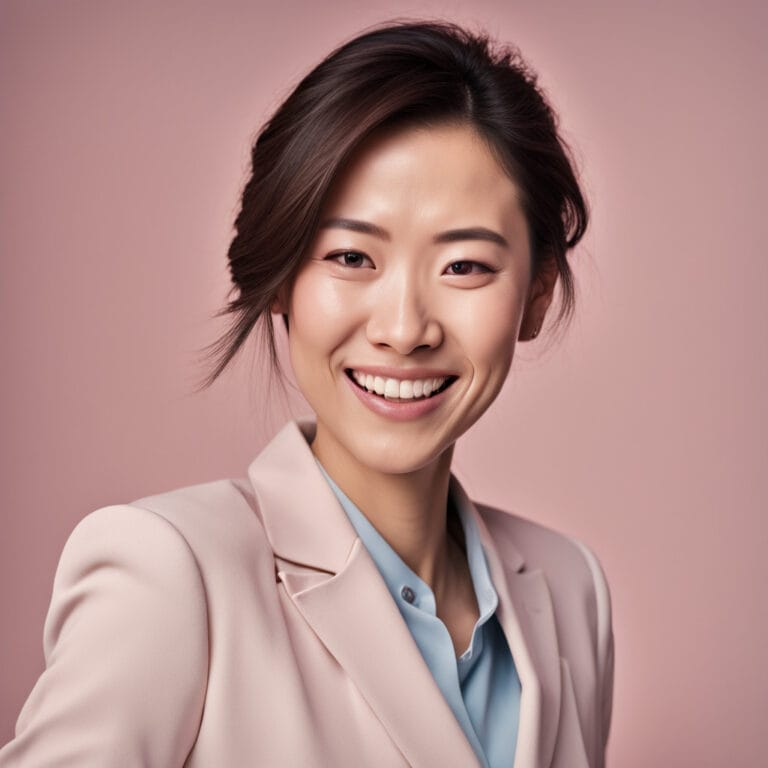
Serene Chiam, Aesthetic Director
Serene Chiam is the Aesthetic Director at Wellaholic, a well-known aesthetic chain in Singapore. She has more than ten years of experience in the aesthetics industry. With a Bachelor of Health Science (Aesthetics) and CIDESCO certifications, she expertly combines scientific knowledge with practical skills. Serene is known for her personalized approach to beauty, ensuring each Wellaholic client’s journey is unique and transformative. Her significant contributions have been pivotal in establishing Wellaholic’s reputation for excellence in aesthetic wellness.
Contact Serene at support@wellaholic.com
GET IN TOUCH
Book Now Pay Later

HairGrow™ 3X Ultimate Hair Loss Treatment
- ⭐ Supercharged Regrowth: HairGrow™ 3X is a premium plan, crafted for individuals seeking to expedite their hair regrowth journey and tackle hair loss effectively.
- ⭐ Personalized Selection: This package lets customers pick three hair loss treatments, customizing their plan to their needs.
- ⭐ Balancing Value & Variety: HairGrow™ 3X provides a unique blend of cost-effectiveness and choice, granting access to top-tier treatments at a significant discount.
- ⭐ Free Supply of Minoxidil. HairGrow™ 3X also includes a monthly supply of Minoxidil with Royal Jelly to jumpstart hair growth.
- ⭐ Award-Winning. Wellaholic’s treatments have been recognized by top beauty publications such as Daily Vanity, Beauty Insider, and Tropika Club Magazine.
- ⭐ Over 2000 Verified Customer Reviews. Wellaholic has over 30 industry awards and over 2000 positive reviews from customers, and >50% are repeat customers.
